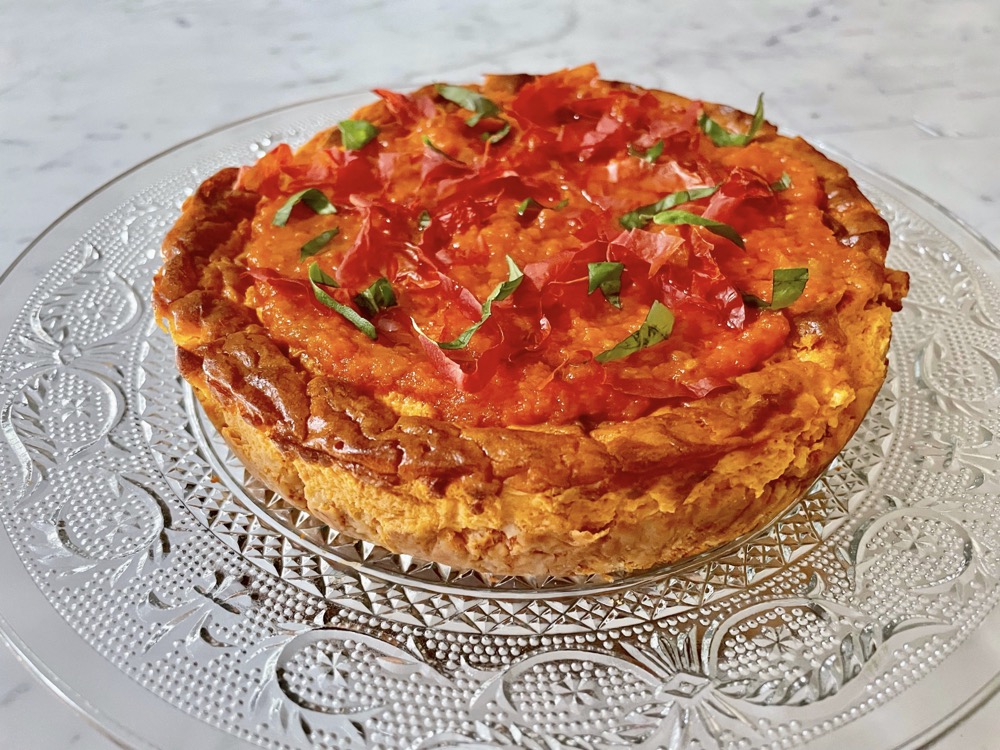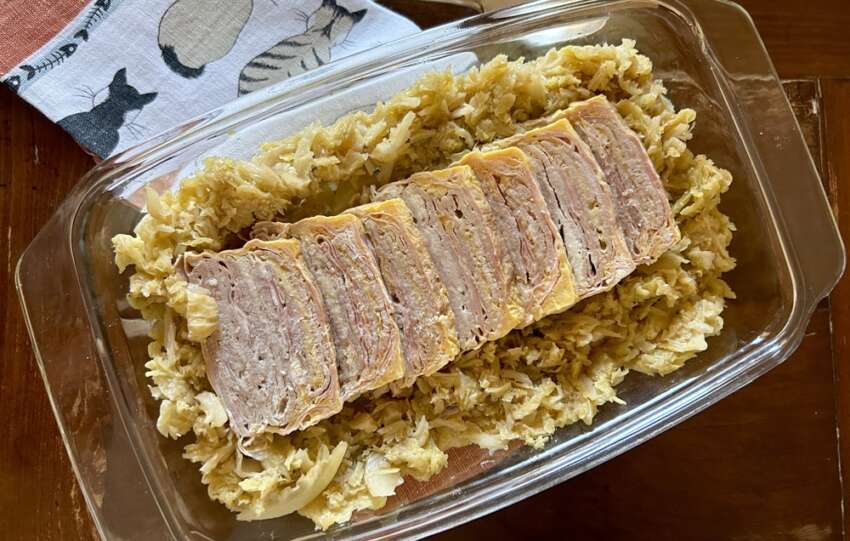When air becomes cold, leaves leave the branches to dress the naked ground and chestnut burrs change their colors from green to orange, I know is arrived the season of the new chestnut flour (and also to make castagnaccio cake).
Do you like chestnut flour?
It is a naturally sweet and gluten-free flour, perfect for many sweet and savory preparations. Usually I use it to make fresh pasta, cakes and cookies. But, above all, chestnut flour to me means castagnaccio cake. A simple and delicious sweet that is characteristic of the Apennine areas of Tuscany, Liguria, Emilia-Romagna and Piedmont.
It is a cake that both my grandmas made and it’s a typical recipe of the culinary traditions of the Apennine Romagna where the chestnut tree live from centuries.

The Origins of the Castagnaccio Cake or Bread of the Poor
It has a very ancient origin and was already known in the sixteenth century.
Certainly, what we know for sure, is that in this big area of Apennine there was the habit of obtaining flour from the grinding of dried chestnuts to make bread and polenta.
Chestnut flour was a poor ingredient and the cake that today we call castagnaccio, over the centuries and depending on the area, was known also as bread of the poor or wooden bread.
The diffusion of chestnut flour among the Apennine populations of central and northern Italy, more than a unique Tuscan origin, makes us think of a recipe codified -that is, written- first by a Tuscan.
The ancestors of the castagnaccio, showed differences in flavor from area to area.
If the base was, and is, always a mixture of flour and water, sometimes it contained honey and sometimes lard. Today the most common version is made with raisins and pine nuts. Or the one with rosemary, that is pure Tuscan style.
Castagnaccio cake is a rustic, semi-sweet and unleavened preparation that looked like a short focaccia.


My Grandma’s Magdalena Castagnaccio Cake
The Tuscan version includes – almost always – rosemary, but not in the Romagna-Tuscan Apennines. My grandmother added raisins and pine nuts to the mixture. But you can also decide to make it only with water and flour. It’s still good, believe me.
It’s a naturally gluten-free cake, if you accompany it with whipped cream it also works well as dessert. Or you can serve it as one of my grandmother made, with a slice of sweetened fresh ricotta or with “stracchino strapazzato” (mixed) with icing sugar.
Chestnut flour is no longer a poor ingredient. On the contrary, in Italy it is expensive.
So use it with respect and make the most of it as much as you can.
Good seasonal cuisine, Monica

Food tips
The new chestnut flour has a very intense flavor. That’s why my grandmother added a small amount of white flour. If you want a gluten-free cake, use rice flour. Or, alternatively, 00 or spelt flour.
Add in a little of unsweetened cocoa powder, with chestnut flour works very well.
Recipe
Ingredients
4-6 serves
20cm diameter mold
chestnut flour, 180g
rice flour, 20g
cold water, 300ml
cane sugar, 30g
olive oil, 1 tablespoon abundant
salt, a pinch
raisin, 25g
pine nuts, 15g
optional
1 tablespoon of unsweetened cocoa
1 teaspoon of rum
Directions
In a little cup, soak the raisins with a drop of rum and hot water and set aside.
In a bowl, mix flour, salt, sugar and cocoa. Then add in olive oil and water.
If you use the electric whisk, pour the liquid all at once and dissolve the lumps. If instead you mix with a wooden spoon, add the water a little at a time so that no lumps of flour form.
Drain the raisin and add it, with the pine nuts, into the batter. If the chestnut flour dough seems a batter, don’t worry, it have to have a liquid consistency. Stir well and put the batter in a baking mold previously greased with oil.
Bake in a preheated oven (190C degrees, static function) until the edges are golden and the surface looks like cracks, for about 30-35 minutes.
Remove from the oven and let cool before removing from the mold.
Sprinkle with icing sugar and eat. Enjoy good food.

Emilia-Romagna
If you’re traveling around my beautiful region, in Autumn don’t miss the opportunity to walk along the “chestnut road” between Modena and Bologna.



